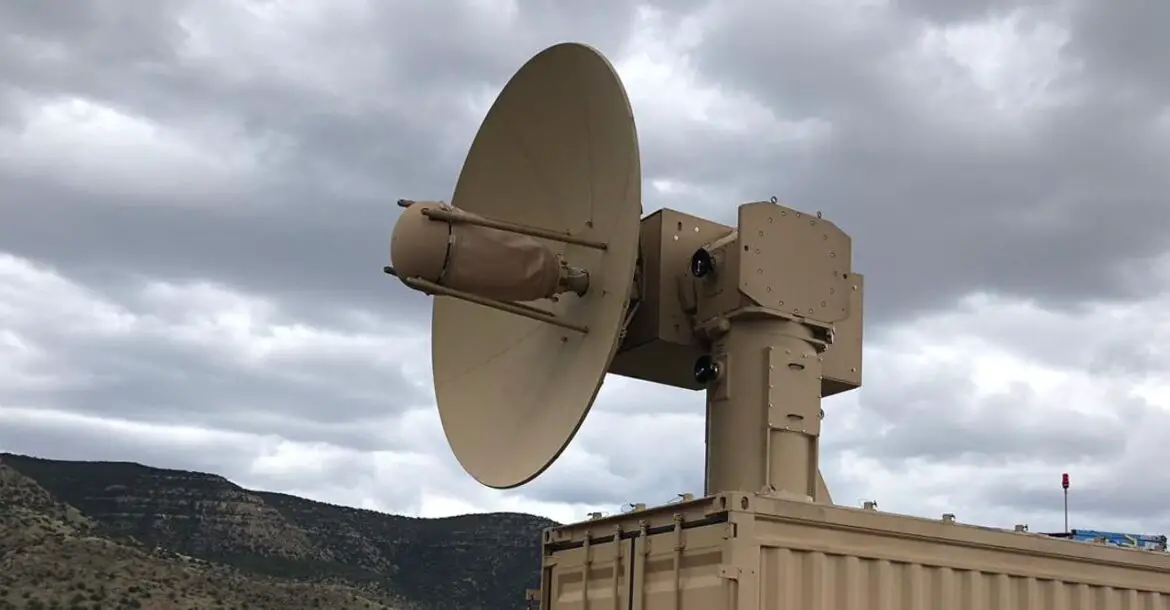US Navy Creates High-Power Microwave Weapons Division

US Air Force microwave weapon. Photo: AFRL Directed Energy Directorate
JOE SABALLA JANUARY 10, 2022
The US Navy’s Naval Surface Warfare Center (NSWC) has established a new division that focuses on research and development of high-power microwave (HPM) directed-energy weapons.
According to Naval Sea Systems Command, creating a division specifically for HPM development allows the service to carry out large projects related to directed energy, develop offensive applications, and counter unmanned aerial systems.
The new division makes the NSWC one of only two Department of Defense facilities with a dedicated HPM division, alongside the Air Force Research Laboratory’s Directed Energy Directorate in New Mexico.
“The Navy has strategic objectives to provide effective and affordable ship defense solutions that address growing threats to our ability to project power and protect freedom of the seas,” US Navy senior technologist Dr. Frank Peterkin explained in a press release.
Importance of HPM
Before creating a separate HPM division, the NSWC had only one division under the directed energy umbrella, focusing on HPM and high-energy laser weapon systems.
However, the service made a strategic decision to split them into separate divisions to address the need for continued growth and development in areas with similar technical roots.
Although the two areas have been split up, NSWC HPM weapon systems division head Kevin Cogley said that HPM and lasers can still work together “in a lot of areas,” particularly in disrupting or destroying the electronics of enemy drones, small boats, and missiles.
He explained that HPM is very different from other weapon systems because a person would not see its outward physical effects during an engagement but observe a nearly-instant result on the target’s performance.
“One thing that is unique in the HPM arena is that we can have graduated effects. In HPM, we can have a range of effects on target – from basically jamming a device to physically destroying electrical systems,” he remarked.
HPM systems are being considered for US Navy missiles with non-kinetic payloads and various anti-satellite systems.

US Air Force microwave weapon. Photo: AFRL Directed Energy Directorate
JOE SABALLA JANUARY 10, 2022
The US Navy’s Naval Surface Warfare Center (NSWC) has established a new division that focuses on research and development of high-power microwave (HPM) directed-energy weapons.
According to Naval Sea Systems Command, creating a division specifically for HPM development allows the service to carry out large projects related to directed energy, develop offensive applications, and counter unmanned aerial systems.
The new division makes the NSWC one of only two Department of Defense facilities with a dedicated HPM division, alongside the Air Force Research Laboratory’s Directed Energy Directorate in New Mexico.
“The Navy has strategic objectives to provide effective and affordable ship defense solutions that address growing threats to our ability to project power and protect freedom of the seas,” US Navy senior technologist Dr. Frank Peterkin explained in a press release.
Importance of HPM
Before creating a separate HPM division, the NSWC had only one division under the directed energy umbrella, focusing on HPM and high-energy laser weapon systems.
However, the service made a strategic decision to split them into separate divisions to address the need for continued growth and development in areas with similar technical roots.
Although the two areas have been split up, NSWC HPM weapon systems division head Kevin Cogley said that HPM and lasers can still work together “in a lot of areas,” particularly in disrupting or destroying the electronics of enemy drones, small boats, and missiles.
He explained that HPM is very different from other weapon systems because a person would not see its outward physical effects during an engagement but observe a nearly-instant result on the target’s performance.
“One thing that is unique in the HPM arena is that we can have graduated effects. In HPM, we can have a range of effects on target – from basically jamming a device to physically destroying electrical systems,” he remarked.
HPM systems are being considered for US Navy missiles with non-kinetic payloads and various anti-satellite systems.
The Moscow Signal was a reported microwave transmission varying between 2.5 and 4 gigahertz, directed at the Embassy of the United States, Moscow from 1953–1976, resulting in an international incident. The US government eventually determined it was probably an attempt at espionage, and that there were no significant health effects on embassy staff, although this conclusion has been disputed.[1]
No comments:
Post a Comment